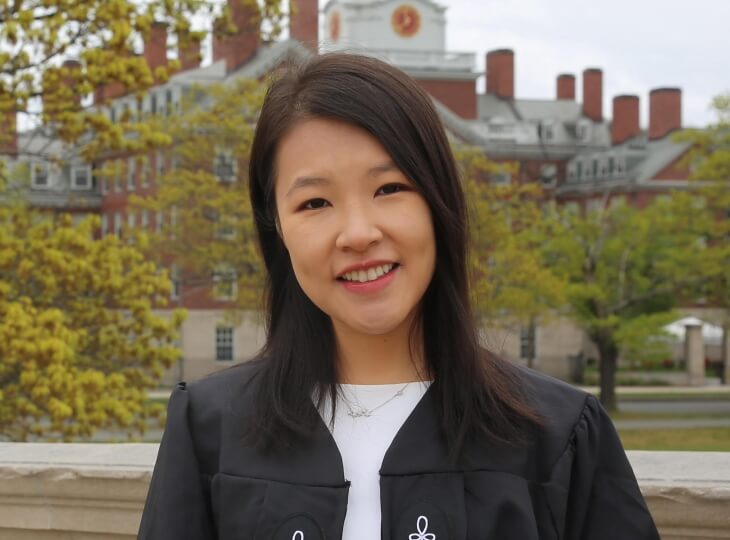Eva Cai (credit: Eva Cai)
Middle ear infections, or otitis media, are common in children, but the solutions are limited: antibiotics, or surgery.
Neither option is particularly appealing, or universally available in places with limited resources or healthcare options.
Eva Cai, S.B. ’21, wanted to find a better solution.
“With systemic drug delivery, all these antibiotics are multi-day, multi-dose,” Cai said. “The insertion of tympanostomy tubes must be done under general anesthesia and may have surgical complications.”
Cai designed a new approach as an independent research project during her junior year studying engineering sciences at the Harvard John A. Paulson School of Engineering and Applied Sciences (SEAS), which she continued as part of her senior thesis course, “ES100: Engineering Design Projects” at SEAS. Dubbed EarFlow, it’s a drug delivery system that, when placed on the eardrum without surgery or anesthesia, administers steroids and antibiotics.
Cai’s EarFlow recently won the undergraduate competition at the National Inventors Hall of Fame’s Collegiate Inventors Competition. It also won a Thomas Temple Hoopes Prize for excellent undergraduate work from Harvard’s Faculty of Arts and Sciences.
“I wasn’t really expecting to be a finalist in the first place, so being selected as a winner was really surprising and really wonderful,” Cai said. “I was really touched by the number of people who reached out to me, not only supporting me, but also telling me about their own personal stories.”
EarFlow combines concepts Cai took from many areas of her SEAS education. From Samir Mitragotri, Hiller Professor of Bioengineering and Hansjorg Wyss Professor of Biologically Inspired Engineering, she learned about drug-delivery systems and technologies. From Aaron Remenschneider, Harvard Medical School lecturer and Investigator at Massachusetts Eye and Ear, she learned the specific challenges often faced by otolaryngologists, also known as ear, nose and throat doctors.
“Most ear procedures, even ear exams, require highly skilled ear specialists, of which there are not that many, and a lot of sophisticated equipment,” Remenschneider added. “Much of the world doesn’t have access to that.”
Cai also worked with Remenschneider on the Beacon Bio start-up, which is working to create more effective grafts to treat eardrum perforations.
“She had the ability to synthesize a lot of information, and really come up with creative practical solutions,” Remenschneider said of Cai, who he co-advised with Mitragotri. “She is smart, independently motivated, and an incredibly creative individual. She took many of the clinical problems that I had described to her in a number of meetings, things that we commonly face in our patients, and used some bioengineering and 3D printing technologies to come up with novel solutions.”
Cai graduated from Harvard last spring and is now enrolled in the Harvard-MIT Program in Health Sciences and Technology.
The award may now be in the past, but she’s still hoping to eventually bring EarFlow to the public.
“I do understand that the development, especially of a combination drug delivery device like this, is quite lengthy,” Cai said. “I hope that we can start doing animal studies to validate the device.”
Press Contact
Matt Goisman | mgoisman@g.harvard.edu
